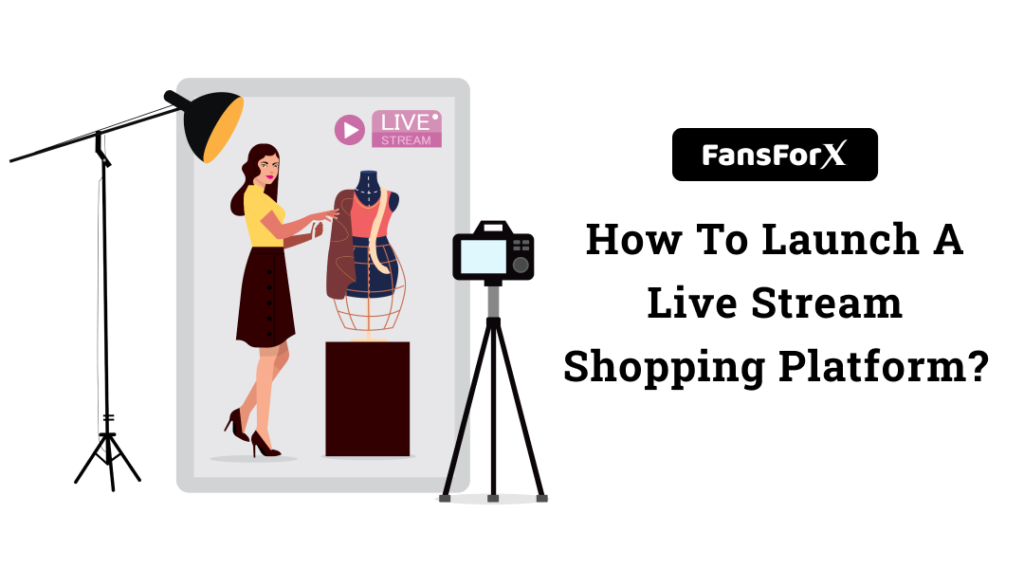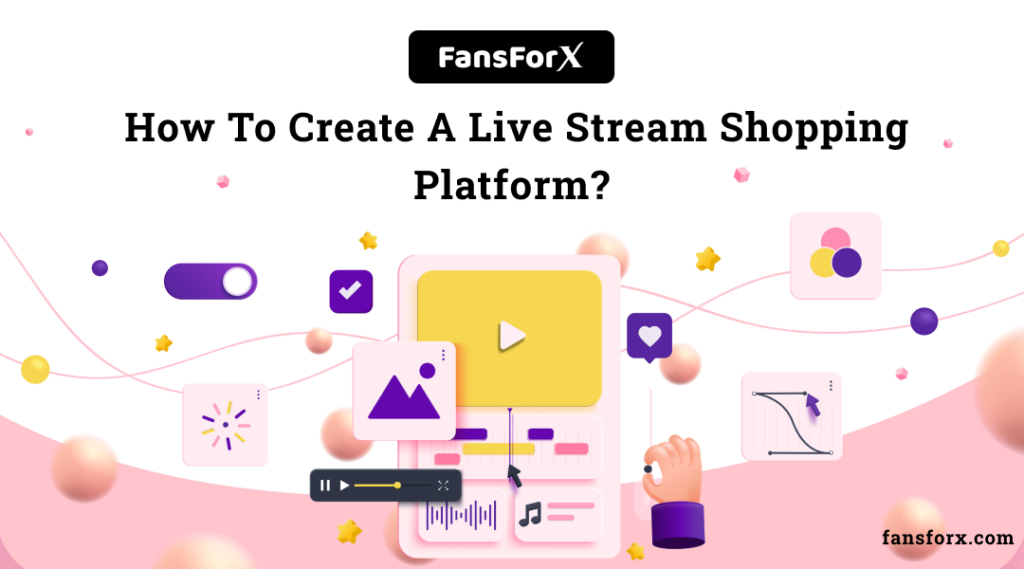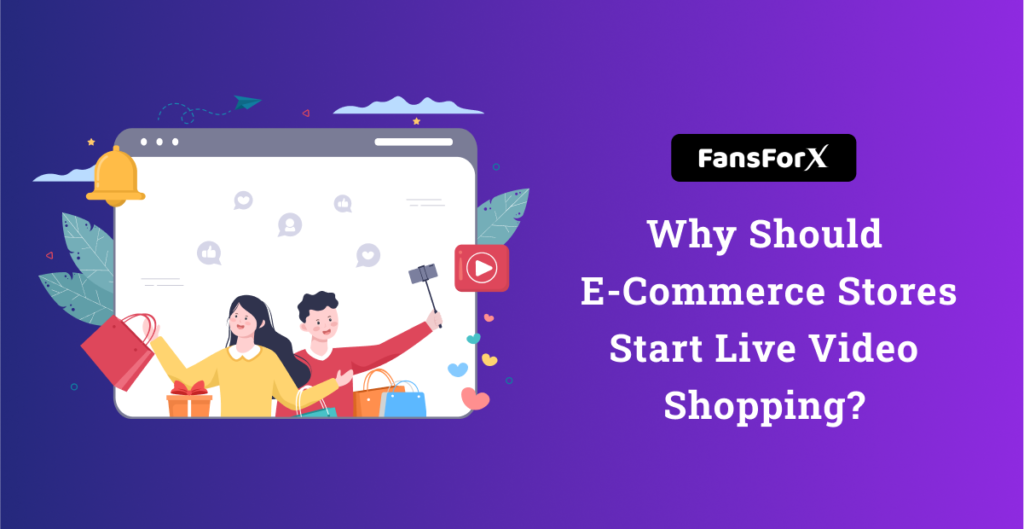Customer service is a strong suit of traditional retailers. They can focus on the various demands of a crowd of consumers at a certain time, answering all of their questions and providing individualized recommendations until the shoppers are pleased and it is convenient for them to purchase the product.
On the contrary, e-commerce virtual stores are more accessible than their physical counterparts. The amount of individuals they can handle and manage at any given moment is unrestricted and the most fascinating feature is that those people can be located anywhere in the world as long as they have a reliable internet connection. Livestream shopping efficiently mixes the two, allowing digital shops to reach a large online audience while yet responding to customers one-on-one.
What is Livestream Shopping?
Ever watched QVC or any home shopping network? Livestream shopping is very similar to how they operate. A presenter shows a product that potential customers can buy during the program.
Furthermore, there are other ways in which Livestream buying improves the usual home shopping experience.
Obviously, it is far more engaging; whereas home shopping channels just enable consumers to call in, Livestream shopping allows viewers to communicate with one another through comments, likes, polls, and other means. Anyone viewing the stream, for example, can ask a question regarding the product or request that the host show the goods from a different perspective.
Furthermore, Livestream purchasing is more convenient for customers in that they do not need to be in front of a screen all of the time to participate; instead, they can be anywhere such as a coffee shop or a bus stand.
Livestream Shopping Platforms
Livestream shopping first gained popularity in China, owing to the availability of fully integrated digital platforms that combined e-commerce, payments, and live streaming. Outside of China, there is a slew of specialist Livestream shopping services aimed towards western viewers. These are some of them:
Whatnot clone
Whatnot clone is a powerful live-streaming shopping website that allows collectors to list, buy, and sell rare treasures such as Pokemon cards, Funko Pops, vintage apparel, antiques, and more.
Popshop live
An iOS-only platform that lets merchants host shows from their iPhones, upload purchase links with photographs and interact with inventory management tools.
Buywith
Allows influencers to “shop live with their followers” on a brand’s e-commerce site, assisting influencers in securing larger partnerships and brands in generating higher ROI from their influencer marketing tactics.
Bambuser
It began as a live streaming tool for journalists but has subsequently expanded into the live streaming retail industry, with brands such as H&M using it.
Livescale
A real-time shopping software that works with a variety of e-commerce systems, including Shopify.
NTWRK
Promotes limited-edition product drops and shopping events on a daily basis.
Launching your own Livestream Shopping Platform
Dedicated live shopping platforms or apps
These platforms are wonderful options for businesses wishing to gain new followers or who want to try live shopping as a marketing tool because they already have an audience.
Shopping event hosting on your own store
You’ll need to host the live shopping event on your own storefront if you want greater control and personalization. This is a popular path taken by numerous retailers. Self-hosting can result in more chances for repurposing footage or replaying the live shopping event after it has aired, in addition to enhanced branding and data collecting.
Social media platforms with built-in shopping capabilities
Unsurprisingly, the most popular channels for holding live shopping events are social media networks. They’re simple to deploy, especially if you’re currently selling through those channels. With its live-streaming choices, YouTube leads the way, followed by Facebook, Instagram, TikTok, and other specialty networks.
Best Practices for Using Live Shopping in your Ecommerce Marketing Strategy
Two crucial factors are required for successful live shopping. Demonstrations of products and opportunities for true engagement between the brand and its customers. However, the format in which this is done is entirely up to you.
Tutorials (for example, Home Depot has been livestreaming basic DIY workshops, while makeup tutorials are another popular format), interviews and Q&As (often with a celebrity, influencer, or brand ambassador), and behind-the-scenes clips to show how a product is developed or made are all popular formats.
The Benefits of Live Shopping
Better engagement
There is simply too much information available. Your potential clients are most likely constantly bombarded with new brands, advertisements, and promotional emails. Consumers are hungry for new experiences, as evidenced by the growing popularity of live shopping.
Quickly generates massive sales
You can expose your product to hundreds or even thousands of individuals in just a few minutes if you market your live shopping event correctly. Furthermore, if your visitors are having a good time, they may invite others to join in.
Builds brand awareness
You must get in front of your target audience in order to effectively increase brand awareness. Owing to the collaborative nature of live streams, your audience is more likely to remember you. Furthermore, having a celebrity or influencer present your live shopping event can help your business become more popular with clients and improve brand recall.
Encourages impulse buying
Live shopping differs from eCommerce in that it gives customers the feeling of being a part of something bigger. Customers frequently purchase items they didn’t expect to buy in order to maintain their sense of belonging.
Conclusion:
Finally, you must choose the platform on which your live shopping event will take place. Due to the fast-growing popularity of live shopping, a slew of platforms has sprung up to support it. Users may now host live shopping events on social media platforms including Instagram, Facebook, and YouTube. There may, however, be certain limitations in this area.


